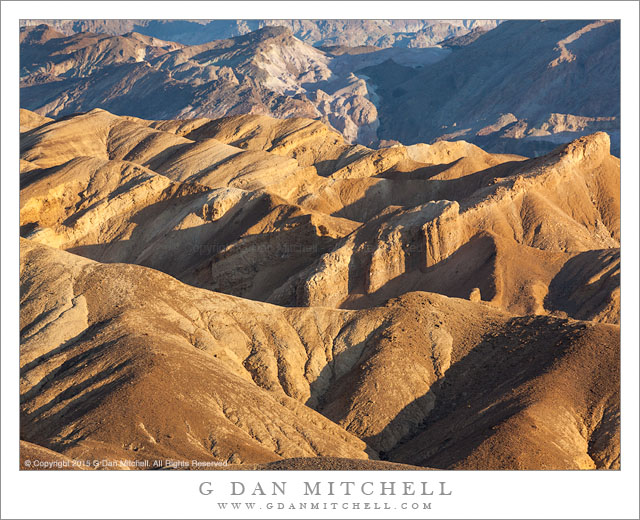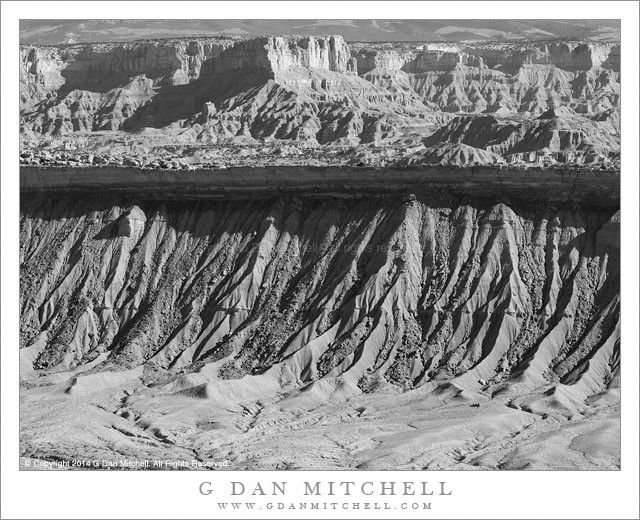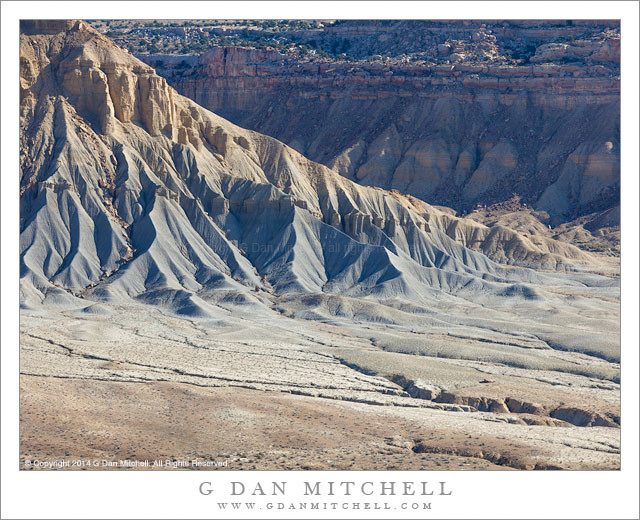
Sand Patterns. © Copyright 2022 G Dan Mitchell.
Varied sand patterns on a fold in dunes at Death Valley National Park.
One of the myths about sand dunes is that their features are in motion, being blown across the landscape by winds. The fact that so many features — ripples, waves — remind us of water reinforces the illusion. But here the fluidity is of a largely static sort, and these features tend to remain in much the same place over long periods of time.
The reasons that dunes come into existence begin to be obvious when ou get to know them. They tend to be in windy places where natural features obstruct, divert, and slow the winds, causing them to drop their load of airborne dust and sand. While these broad features are easy to understand, I remain mystified by the smaller scale features like those seen in this “intimate landscape” photograph — the waves, ridges, valleys, drop-offs that also tend to remain fixed.
G Dan Mitchell is a California photographer and visual opportunist. His book, “California’s Fall Color: A Photographer’s Guide to Autumn in the Sierra” is available from Heyday Books, Amazon, and directly from G Dan Mitchell.
Blog | About | Flickr | Facebook | Email
Links to Articles, Sales and Licensing, my Sierra Nevada Fall Color book, Contact Information.
Scroll down to leave a comment or question. (Click this post’s title first if you are viewing on the home page.)
All media © Copyright G Dan Mitchell and others as indicated. Any use requires advance permission from G Dan Mitchell.




